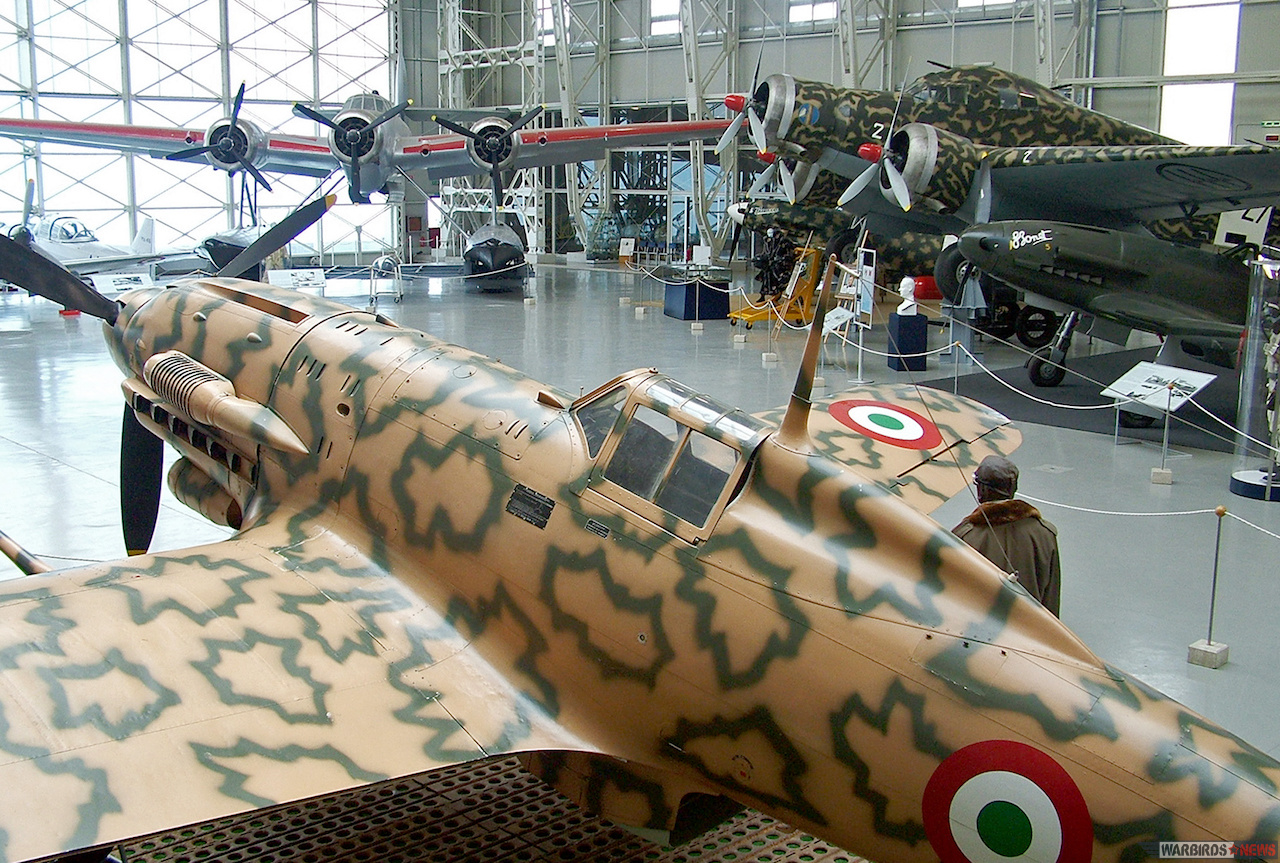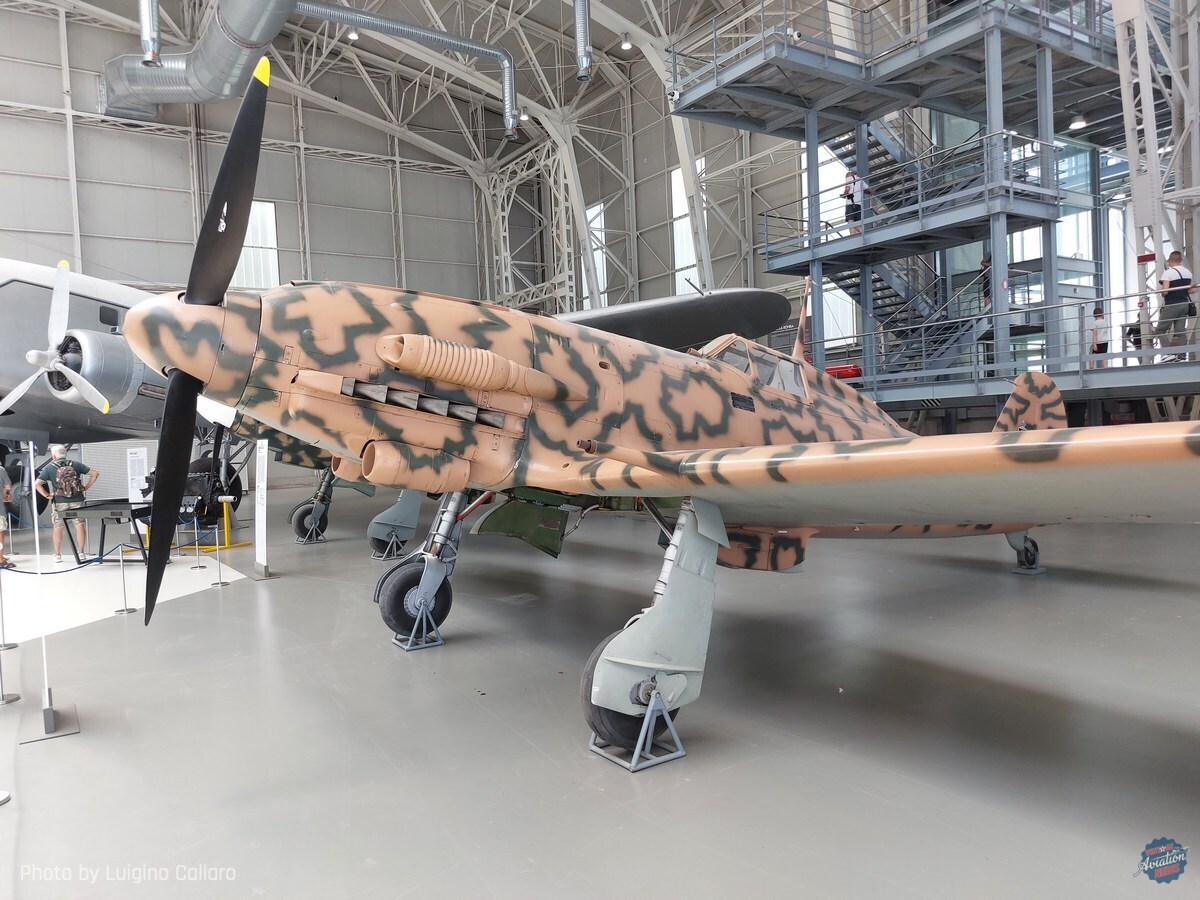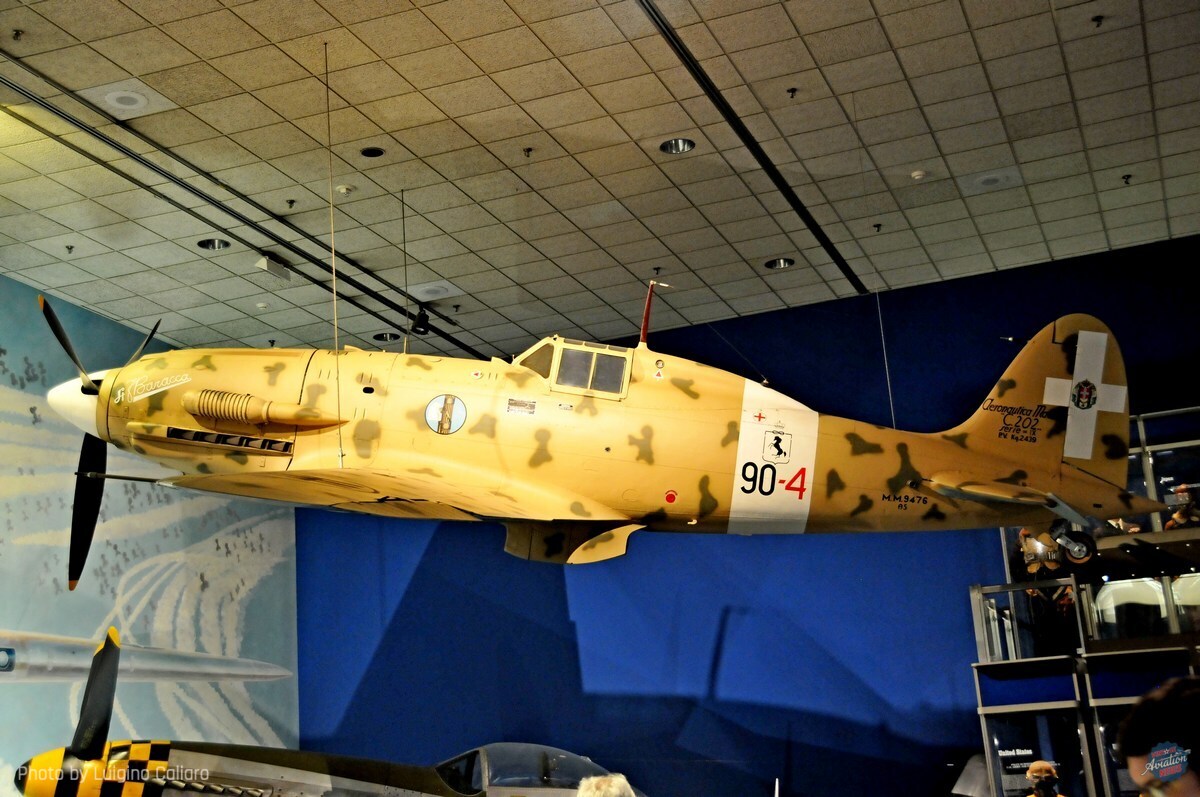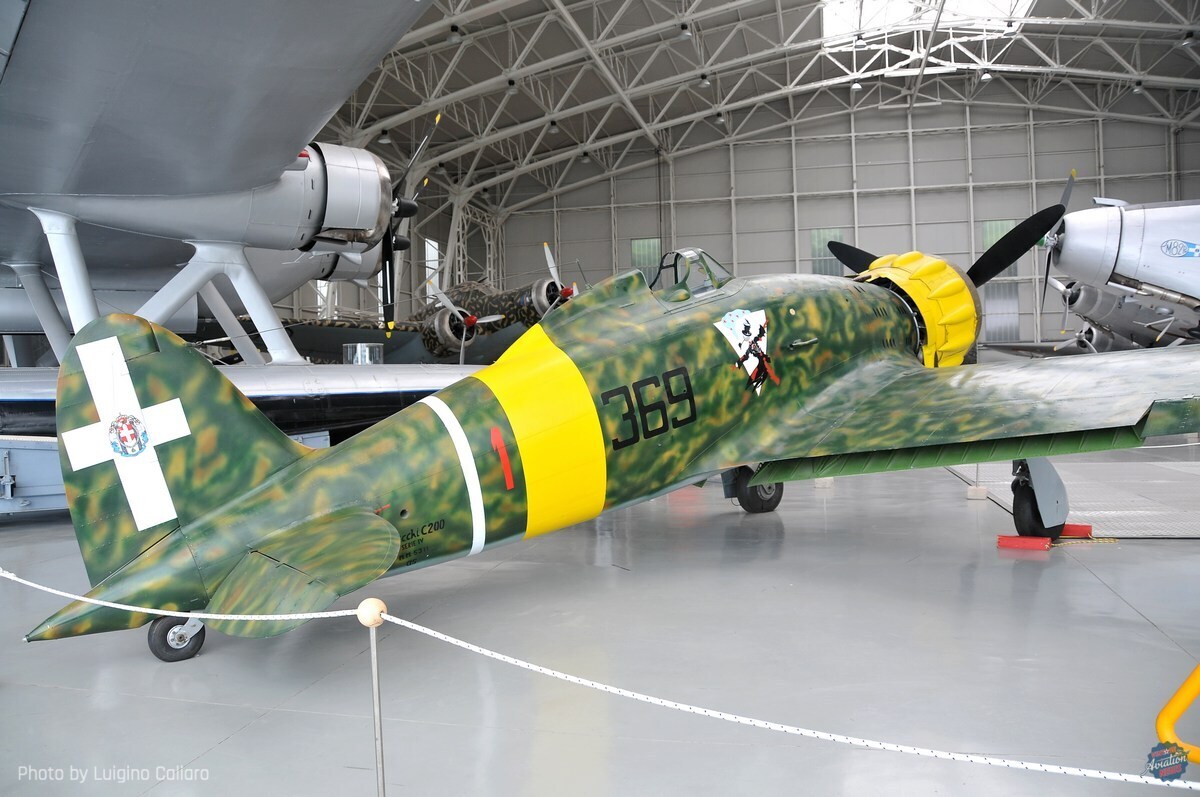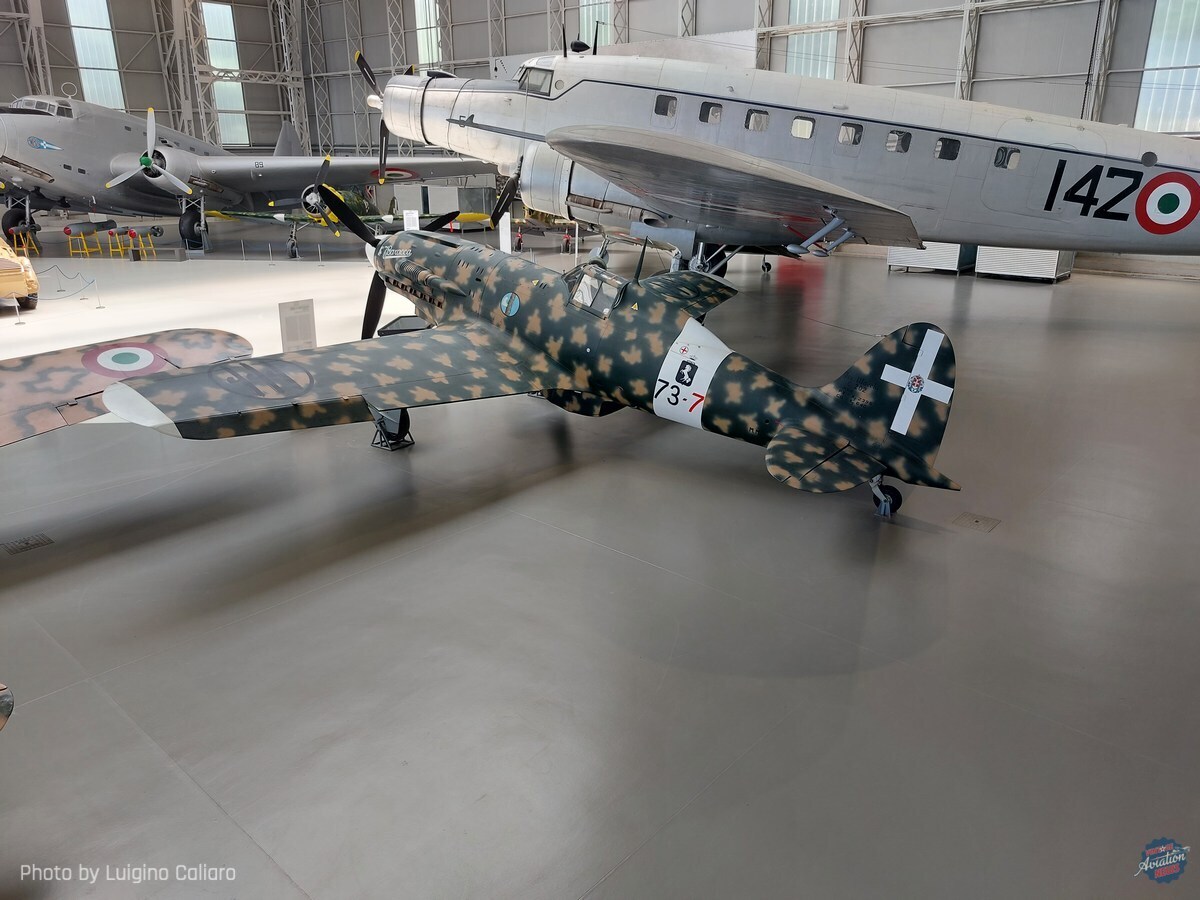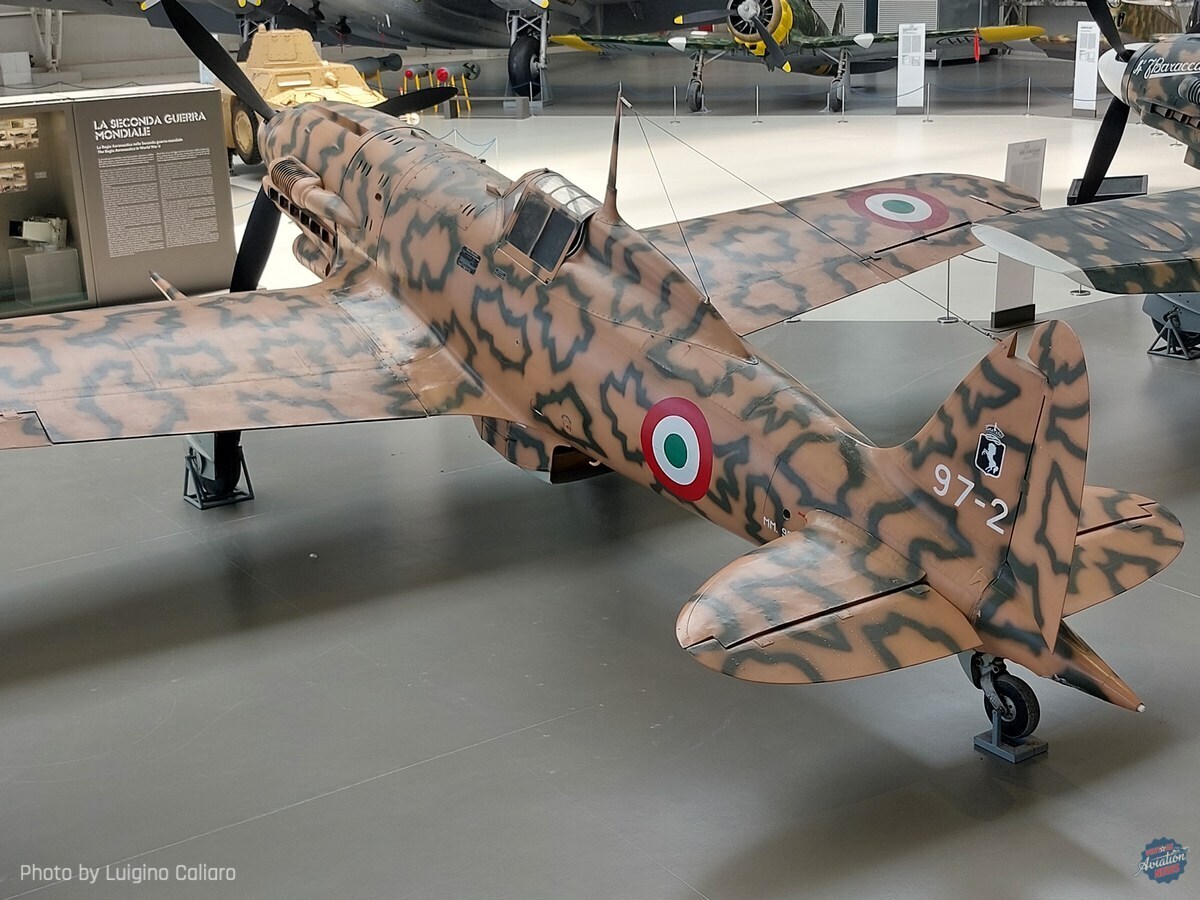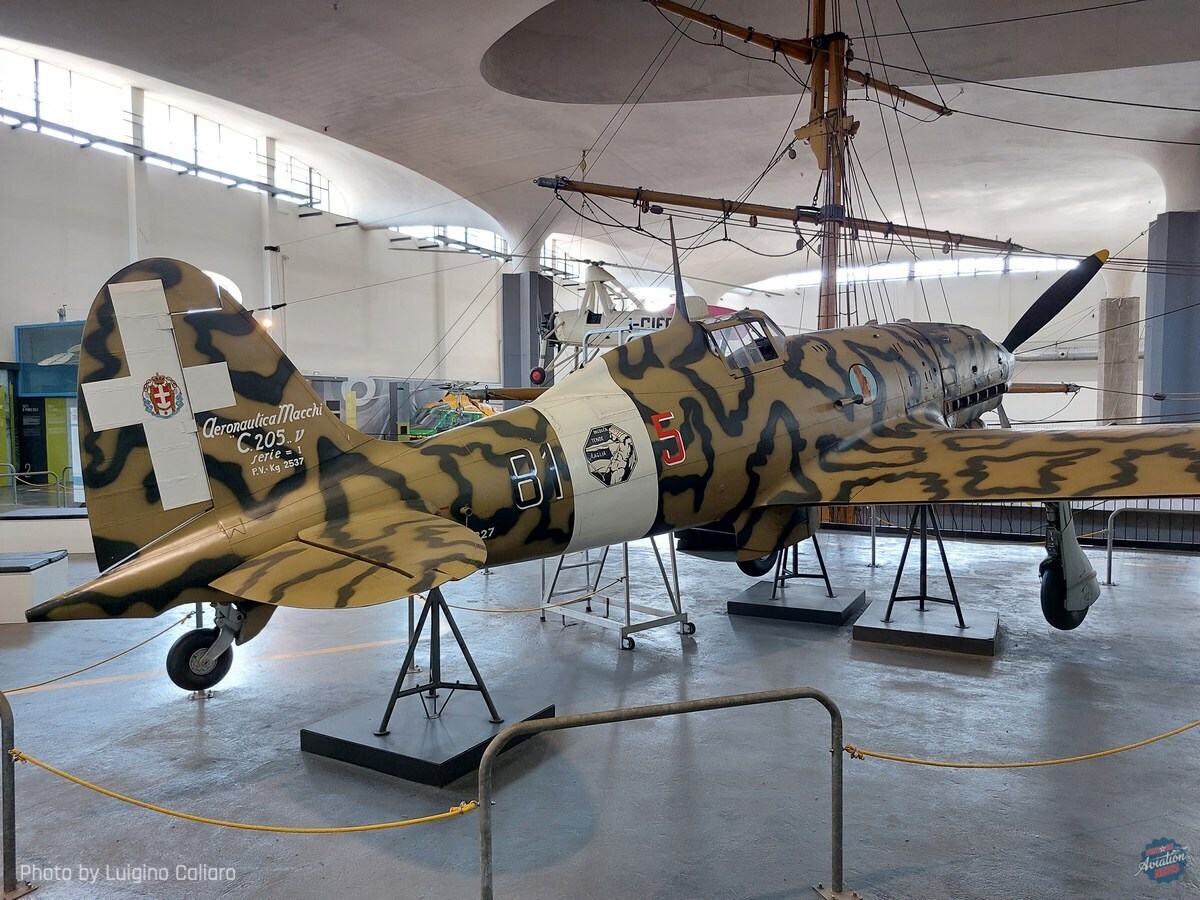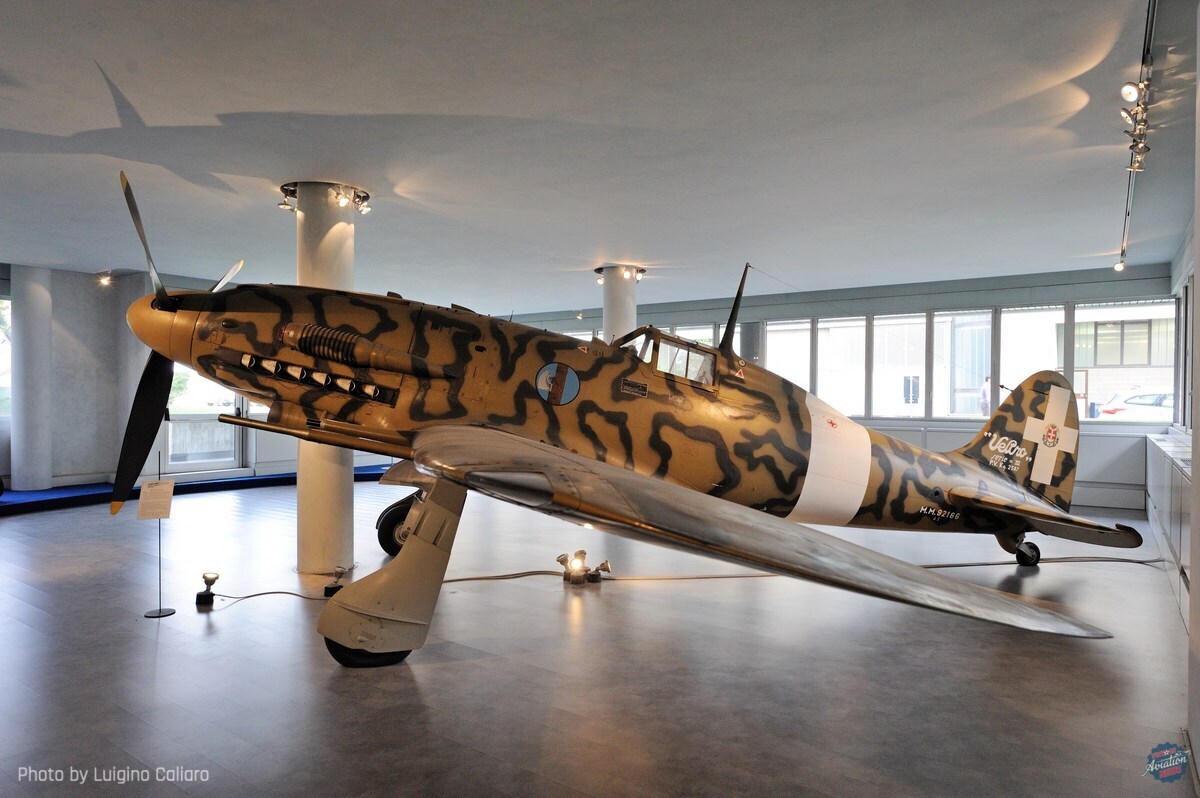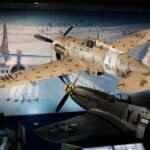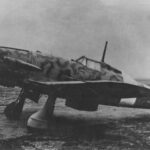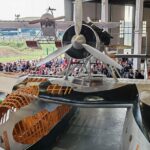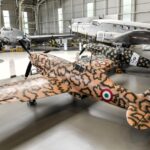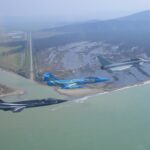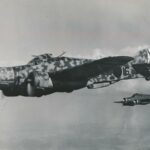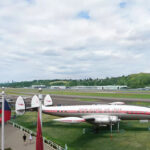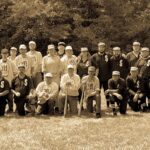Precious few Macchi fighters have survived intact and are on display today. In total, just seven of these proud Italian fighters are preserved in museums- two C.200 Saetta, two C.202 Folgore, and three C205 Veltro. Of these, two aircraft were captured by American troops and are preserved in the United States while the other five are preserved in their home country. Macchi Fighters Survivors is part of a larger editorial work by Luigino Caliaro titled Macchi Fighters: C.200 Saetta, C.202 Folgore, C.205 Veltro. This stand-alone monograph covers the development, production, technical details, and operations of these variants.
C.200 Saetta MM 8146, National Museum of the U.S. Air Force, Dayton, Ohio
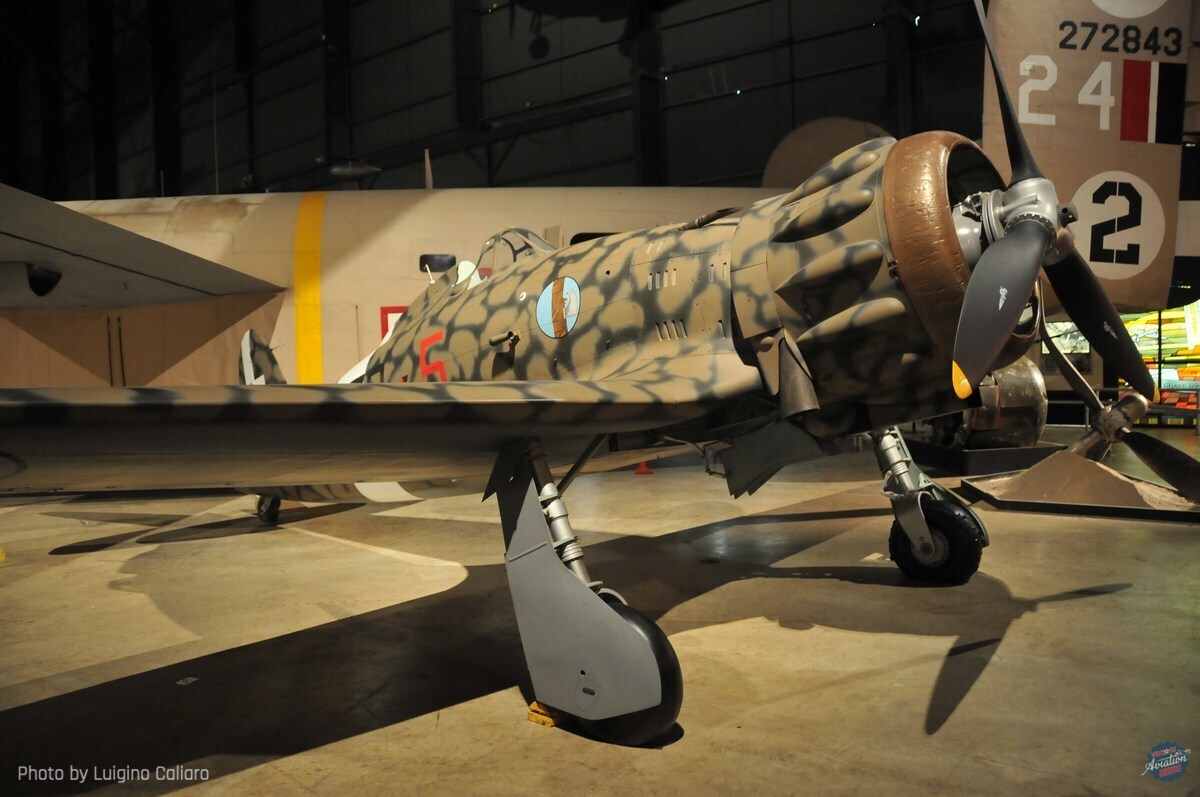
This fighter belonged to the 19th series produced by Breda in 90 aircraft in 1942, it was delivered to the Regia Aeronautica Italiana (Royal Italian Air Force- RAI) in June 1942 and assigned to the 372nd Squadron of the 153rd Autonomous Group at the Turin-Mirafiori Airport and subsequently transferred to North Africa where it was assigned to various other squadrons and ultimately at K3 airfield in Benghazi, Libya in November 1942. Captured by the Americans, it was shipped to the United States and displayed at numerous events and exhibitions, towards the end of the 1940s the Saetta was donated to the city of Worcester, Massachusetts.
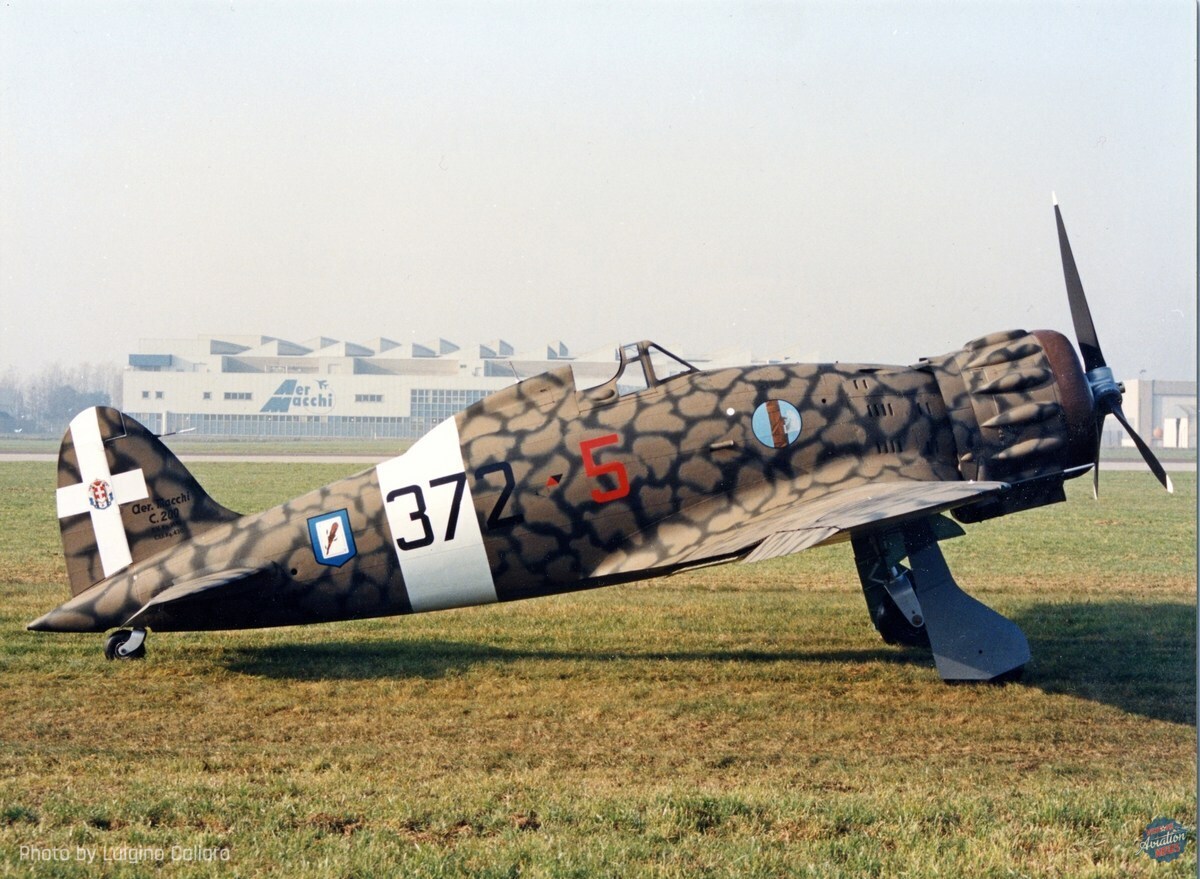
The wreck was purchased by a private individual who exhibited it outdoors until 1964 when he sold it to the Bradley Air Museum (New England Air Museum today) in Windsor Locks, Connecticut. At the end of the eighties, for financial reasons, the museum sold it to Jeet Mahal, a collector of artifacts for US museums who in 1989 contacted AerMacchi (Now Alenia AerMacchi) for the restoration. Thanks to the support of the Italian association A.R.E.A, the Italian company began the restoration work on the fighter at the beginning of 1990, which proved to be particularly complex considering the condition of the aircraft. However, thanks to the availability of the technical documentation and with the enthusiastic support of other volunteers and associations the aircraft was officially presented to the public on December 12, 1991, at the Venegono airport, home base of AerMacchi. Nearly a year later, the Saetta was put on display at the National Museum of the U.S. Air Force in Dayton, Ohio. Although slightly different from the original paint scheme, the aircraft was restored with the original codes of aircraft 372-5 MM (Matricolo Militare, Italian for Serial Number) 8146 aircraft, the same codes applied when it was recovered on the Benghazi field by the allies.
AerMacchi C.202 MM91981, National Air and Space Museum Smithsonian Institution, Washington, DC
Subject to a recent article by Adam Estes (click here), this Macchi C.202, which is on display at the National Air and Space Museum Smithsonian in Washington, DC, appears to be the world’s only completely intact and original C.202 Folgore.
Captured in Sicily by American troops, it was transferred to the US and subjected to a series of flight evaluations in September 1945 by the pilots of the Army’s Air Technical Service Command at Wright and Freeman fields. Thanks to recent research by Italian historian Giovanni Massimello, the true identity of this fighter has been documented.
The fighter is AerMacchi MM91981 which was assigned to the 356th Squadron of the 21st Fighter Group (FG) with the individual code 356-8 and was captured by the Americans in good condition at Sciacca airport. After being used and repainted with the upper surfaces in a sand color, the American badges and baptized as Wacky Macchi, by some pilots of the American 31st FG. Upon being shipped to Wright Field in Dayton, Ohio the C.202, coded FE300, was used with approximate Italian colors and insignia until April 1946 with the code FE300 (later FE498) before being placed in storage.
In 1974, the then curator Robert C. Mikesh contacted AerMacchi and the SMA to obtain documentation for its restoration for public display. At the end of the works, in 1975, the fighter was exhibited with the colors of the C.202 “90-4”, a fighter belonging to the 90th Squadron of the 10th Group, 4th Wing when it was operational in Libya in the summer of 1942. Bizarrely it was applied the MM9476 (belonging to a fighter of the IX Series assigned to the 54th Wing, while originally the C.202 90-4 had the MM7795 belonging to the II Production Series). Again, to read the story of this fighter, read Adam Estes’ “The Smithsonian’s Italian Thunderbolt.”
Breda AerMacchi C.200 “Saetta” MM 5311, MUSAM- Museo Storico dell’Aeronautica Militare – Vigna di Valle (Roma)
Preserved at the Museo Storico dell’Aeronautica Militare (Italian Air Force Museum- MUSAM) in Vigna di Valle, this C.200 was assigned to the 93rd Squadron of the 8th Group and after the Armistice, the non-airworthy fighter was assigned to a technical school as an instructional airframe. A peculiarity of the aircraft is that it is equipped with wings with a sharp leading edge, typical of the first examples of construction. In 1961, the aircraft was recovered by the Air Force to be exhibited at various demonstrations and events organized by the Historical Museum. In September 1975 it was temporarily painted as 92-01 to commemorate the activity of the 8th Group on the occasion of the 50th anniversary of the establishment of the 2nd Wing.
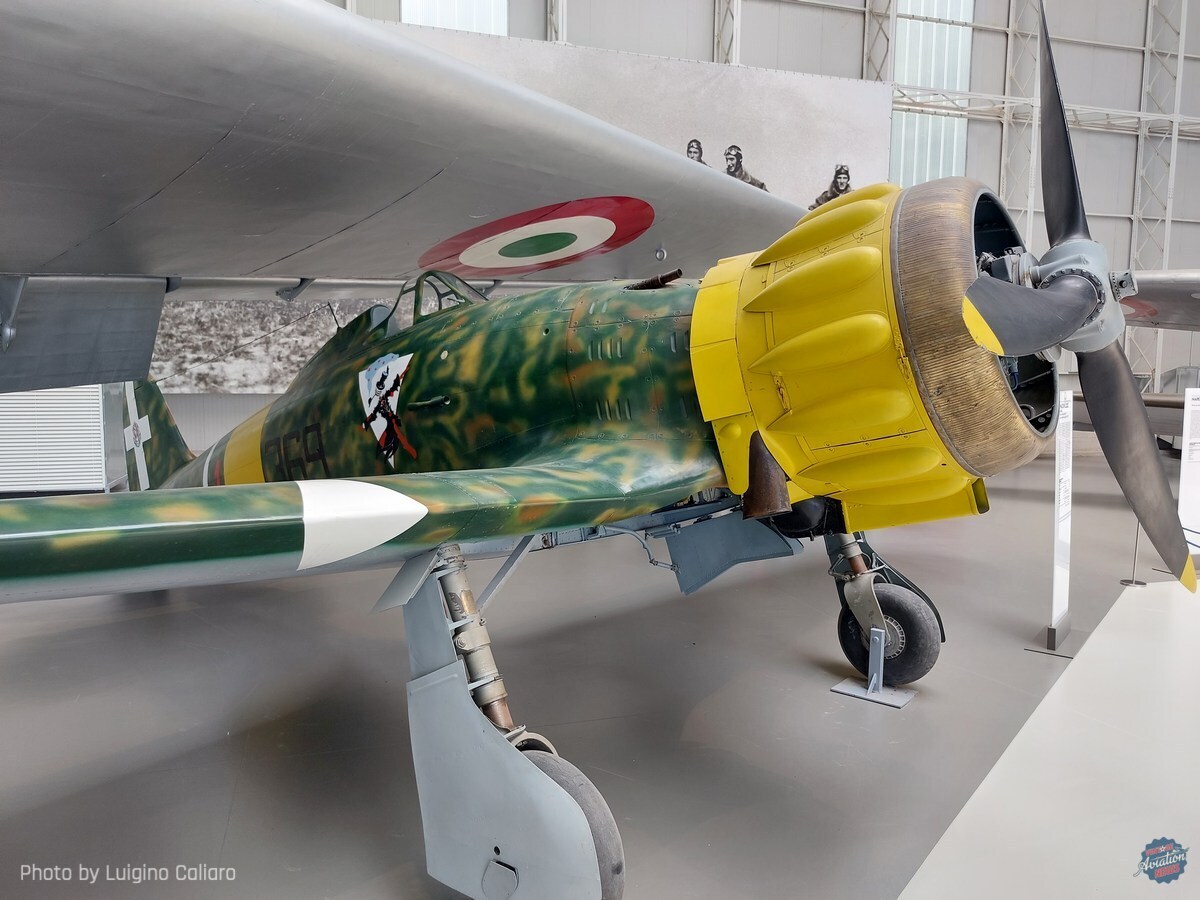
Subjected to a further restoration in Lecce at the III Aircraft Technical Department in 1976, it emerged with the livery of a C.200 used by the 359th Squadron of the 22nd Autonomous Group which operated in Russia. The paint scheme was only partially correct, but it was corrected it in 1995, thanks to the work of the personnel of the 51st Stormo that restored the aircraft by applying a faithful livery belonging to a wartime Saetta of the 369th Squadron of the 22nd Gruppo Autonomo.
Breda AerMacchi C.202 MM 9667 – MUSAM- Museo Storico dell’Aeronautica Militare – Vigna di Valle (Roma)
Also displayed at MUSAM, this second C.202 was delivered in March 1943 to the 86th Squadron of the 7th Group/54th Stormo and the 208th Squadron of the 101st Group 5th Wing of the Co-Belligerent Regia Aeronautica in spring 1944. In December 1946 this Folgore was assigned to the 3rd Group of the Flight School of Lecce, with the individual code “63”, until it was stricken in 1948. Subsequently, the aircraft was assigned, first to the Naval Academy of Livorno and then to the Department of Aerospace Engineering of the University of Pisa. In the 1970s the aircraft was recovered by the Collection and Restoration Center of the MUSAM which sent it to Lecce to be restored by the III R.T.A. Today the Folgore is painted to represent the personal aircraft of Lt. Giulio Reiner, commander of 73rd Squadron of the 9th Group of the 4th Wing, based at Fuka Airport in July 1942.
Unfortunately, the various restoration tasks were not carried out with the utmost fidelity, and today the aircraft presents some substantial differences compared to the original fighter. One of the most visible defects is given by the propeller spinner which was poorly reproduced, thus altering the original sleek line of the fighter. Another problem is located in the wings, which were missing when the aircraft was recovered. To proceed with their reconstruction, a left-half wing of a C.200 was recovered at the AerMacchi factory which was used as a pattern for the reconstruction of the right wing. The rounded leading edge was correctly fitted but the ailerons were not modified and remained the ones of the C.200. Furthermore when reproducing the missing wing, it was not taken into account that originally the Macchi wings had different lengths to counteract the torque effect generated by the rotation of the propeller and therefore the current wingspan of the Folgore is about twenty centimeters shorter than to what it should have been.
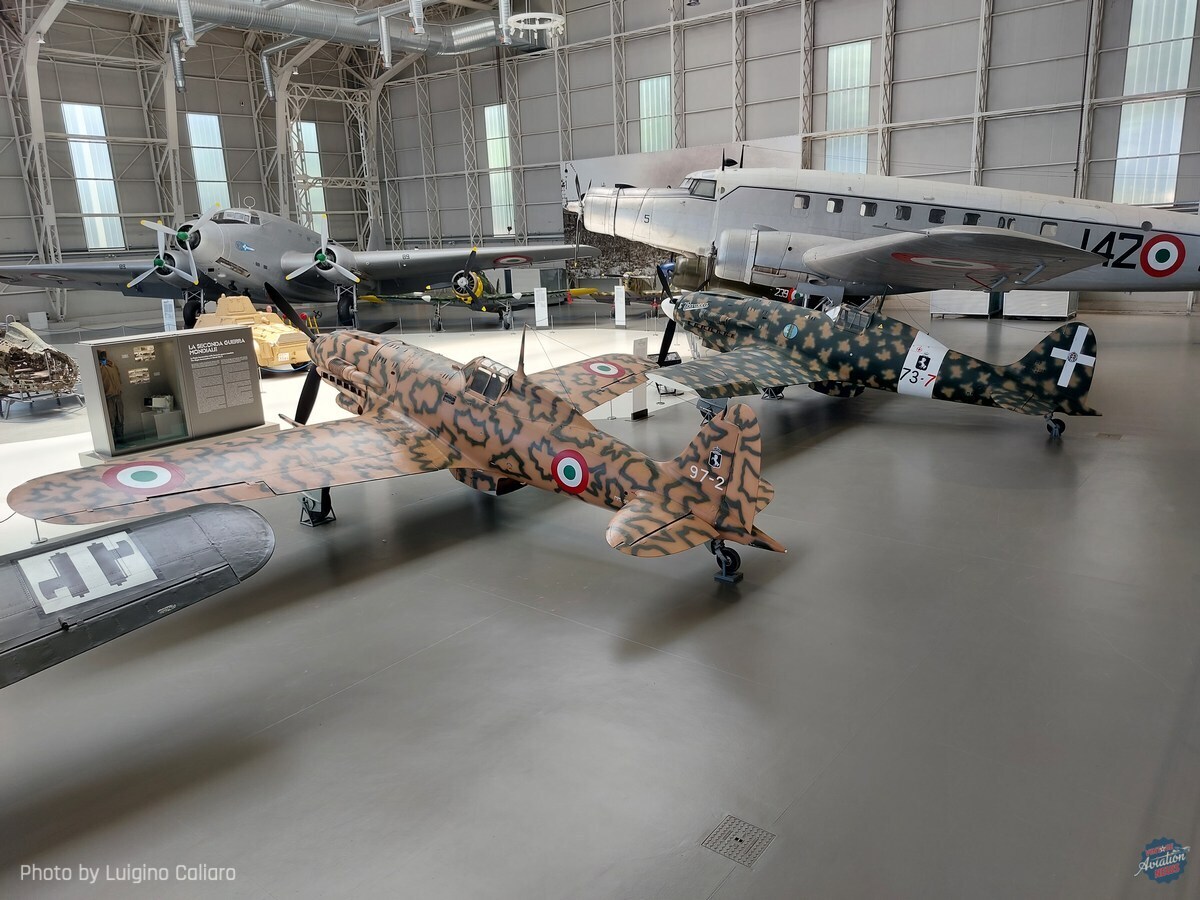
Breda AerMacchi C.202/205V “Veltro” MM 9546, MUSAM- Museo Storico dell’Aeronautica Militare – Vigna di Valle (Roma)
The MUSAM is also home to one of the 100 C.202s that was subsequently converted to the C.205 standard. Originally in service with the 81st Squadron of the 6th Group, 1st Wing, this Veltro was taken over by the 155th Group of the 51st Wing following the Armistice. After various further assignments to squadrons of the Cobelligerent Air Force, it was damaged in Albania on September 15, 1944, with Sergeant Major Moressi of the 93rd Squadron of the 8th Group, 5th Stormo. Once repaired, it remained in service until May 1948 it was assigned to the 3rd Group of the Lecce Flight School, where it remained until December 1949, when it was sent to Macchi for conversion to a C.205 Veltro due to a possible acquisition by Egypt. When that order failed to materialize it was returned to Lecce where it remained until its retirement on July 1, 1952.
Exhibited at the Turin Flight Museum without livery and with only the tricolor roundels, it was subsequently transferred to Vigna di Valle, restored for the first time by the 3rd RTA of Lecce and in February 1994 by the specialists of the 4th RMV of Grosseto, who painted it with the livery of a Veltro of the 97th Squadriglia of the 9th Group of the 4th Stormo, with the codes 97-2 and with the original MM. 9546.
Breda AerMacchi C.202/205V “Veltro” MM 91818, Museo Nazionale della Scienza e della Tecnologia – Milano
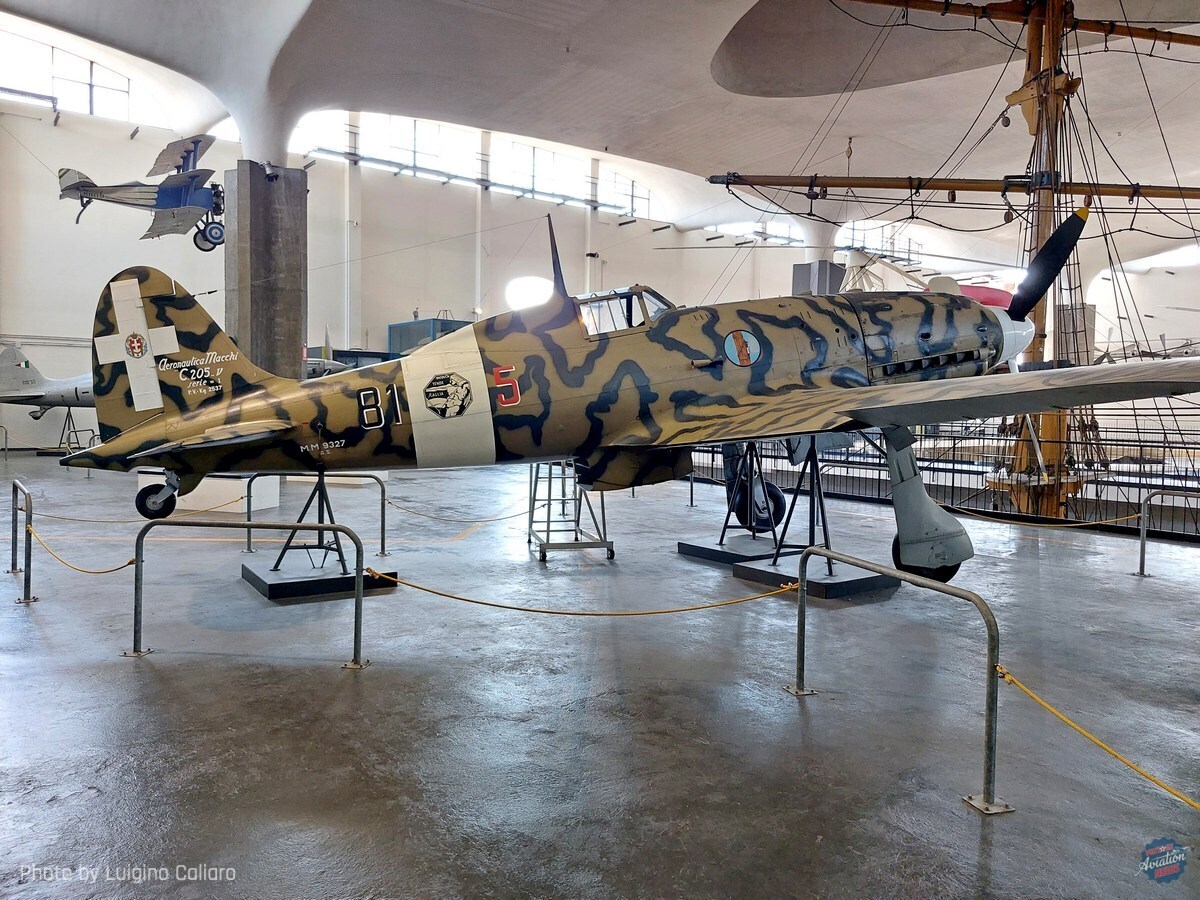
The C.205 exhibited at the Museo Nazionale della Scienza e della Tecnologia (National Museum of Science and Technology) in Milan also appears to be the conversion of a C.202, MM91818 to be specific. Following an initial posting to the 386th Squadron of the 21st Group of the 51st Stormo, it was assigned to various squadrons of the 4th Wing and then to the 209th Squadron of the 102nd Group of the 5th Wing. In 1946, it was assigned to the 3rd Group at the Lecce Flight School, where it operated until July 1, 1948. Like the previous C.205, this fighter was also part of the failed Egyptian order and was returned to the Lecce Flight School. After its retirement from active duty in the early 50s, the aircraft was assigned to the to the “Malignani” Technical Institute where the engine was reportedly run by students on a regular basis. In 1980, the aircraft was recovered by Macchi and turned over to a group of elderly specialists and technicians with the task of returning it to airworthy status. It was a particularly complex project where many components had to be built from scratch, but thanks to the support of other aeronautical companies such as FIAT Avio, which overhauled the engine, Oleodinamica Magnaghi, Itala and Secondo Mona, the dream of many enthusiasts finally came true when the Veltro took to the skies again on September 26, 1980.
The civil registration l-MCVE was applied to the aircraft and the camouflage chosen for the aircraft was similar to that of the C.205 of the 4th Wing which, piloted by Maj. Carlo Maurizio Ruspoli. In the following months the C.205 was proudly exhibited at numerous air shows in Italy and abroad by Macchi test pilots Cecconello and Durione, but unfortunately the fighter was seriously damaged in a take-off accident on July 23, 1986. The C.205 has been repainted as MM9327 (81-5) belonging to the 81st Squadron of the 6th Group 1st Wing in May 1943. However, the livery is not exactly correct, since that serial number corresponds to a Veltro of the 1st Series without the wing cannons.
AerMacchi C.205V “Veltro” MM 92166 – LEONARDO – Aermacchi -Venegono Superiore (VA)
This aircraft is the only original C.205 and it’s currently displayed at the entrance of the Aermacchi office building in Venegono (VA) now Leonardo. However, its true origin is in doubt since the fuselage denotes some characteristics typical of the C.202 Folgore, such as a fixed tail wheel and radio access panel of the same shape as those of a late C.202. Nonetheless, taking the serial number 92166 as valid, this Veltro was delivered to the Regia Aeronautica on July 15, 1943, and assigned to 360th Squadron and 378th Squadron of the 155th Group of the 51st Wing with the individual code 378-2. Historical research indicates that this C.205 shot down an American P-40 fighter on July 22, 1943, and on August 2, 1943, Lieutenant Dini intercepted a claimed B-26 Marauder off Capo Carbonara in Sardinia.
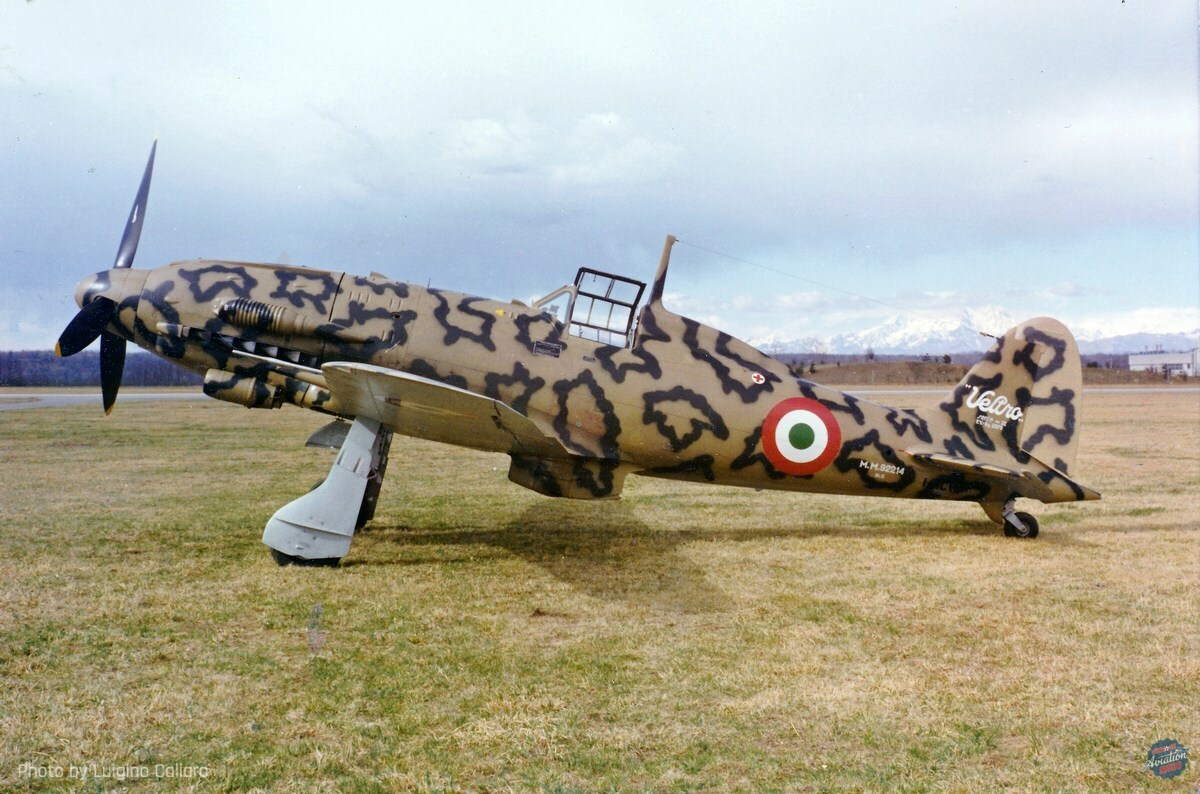
After the Armistice, it was assigned to the 51st Wing until its transfer to the Lecce Flying School in the spring of 1945. Retired in 1959, MM92166 was exhibited at various airshows in a metallic finish without insignias. In 1973, the aircraft was sold to the National Museum of Science and Technology in Milan. It was preserved in the new Air and Sea Transport pavilion sporting the bare aluminum fuselage and still with the pods under the wings. In 1988, an agreement was signed between Macchi and the Museo Nazionale della Scienza e della Tecnologia of in Milan, for the exchange of the museums’ respective Macchi C.205, with Macchi obtaining this only Veltro built at its factory. Following the exchange, the fighter was subjected to a thorough overhaul and restored to airworthy status, but it’s never again seen air under its wings.
AerMacchi C.200 “Saetta” MM not identified, Museo Aeronautico “Gianni Caproni” – Trento
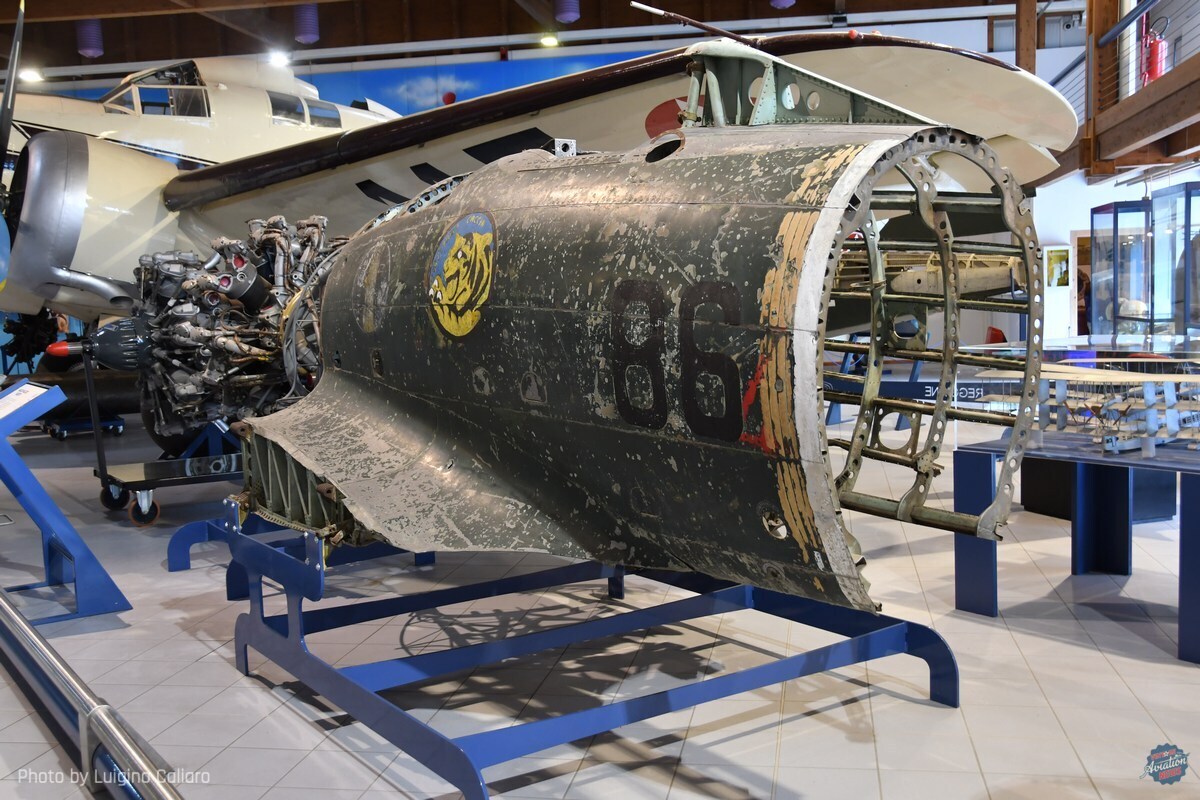
The Gianni Caproni Aeronautical Museum in Trento has a pair of fuselage sections, recovered from an aviation enthusiast in Bologna in the early 70s, having purchased them from the University’s Faculty of Aeronautical Engineering. After being offered to AerMacchi, the wrecks were purchased by the Caproni Museum.
Although the identity of the aircraft remains unknown, it is hypothesized that it could be one of the two C.200s of the 8th Group which were to be handed over to the Allies after the Armistice. It is presumed that during the transfer flight, one of the pilots made an emergency landing not far from his home in the Marche region. The dismantled fighter was hidden disassembled by the pilot and returned after the war to the Air Force which probably gave it to the local College’s Engineering Faculty. In 1992, in anticipation of its exhibition at the new headquarters of the Caproni Museum in Trento, an attempt was made to reconstruct the fuselage, but this was not possible due to the complexity of the work. The restoration work on the fuselage revealed the original codes of the aircraft, 91-4 relating to the 92nd Squadron of the 8th Autonomous Group in 1943. Further analysis revealed the individual number 86 which confirmed that the fighter was used by the 86th Squadron of the 7th Group of the 54th Wing. An important detail was the discovery of part of the 54th Wing’s badge, represented by a tiger’s head. After painstaking restoration work which started at the end of 2010 what remains of the aircraft was exhibited in the main hall of the Caproni Museum at the Trento Mattarello airport.
